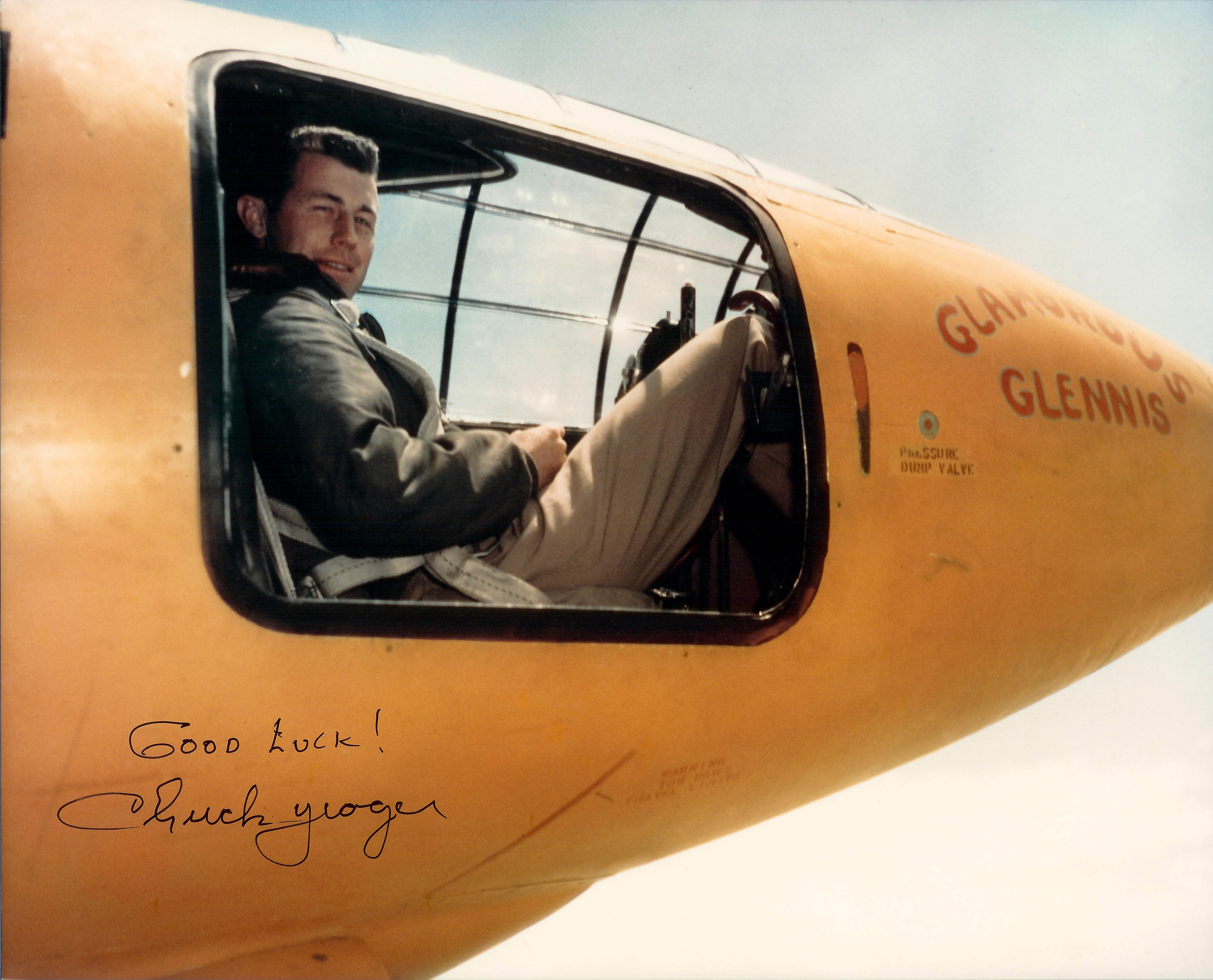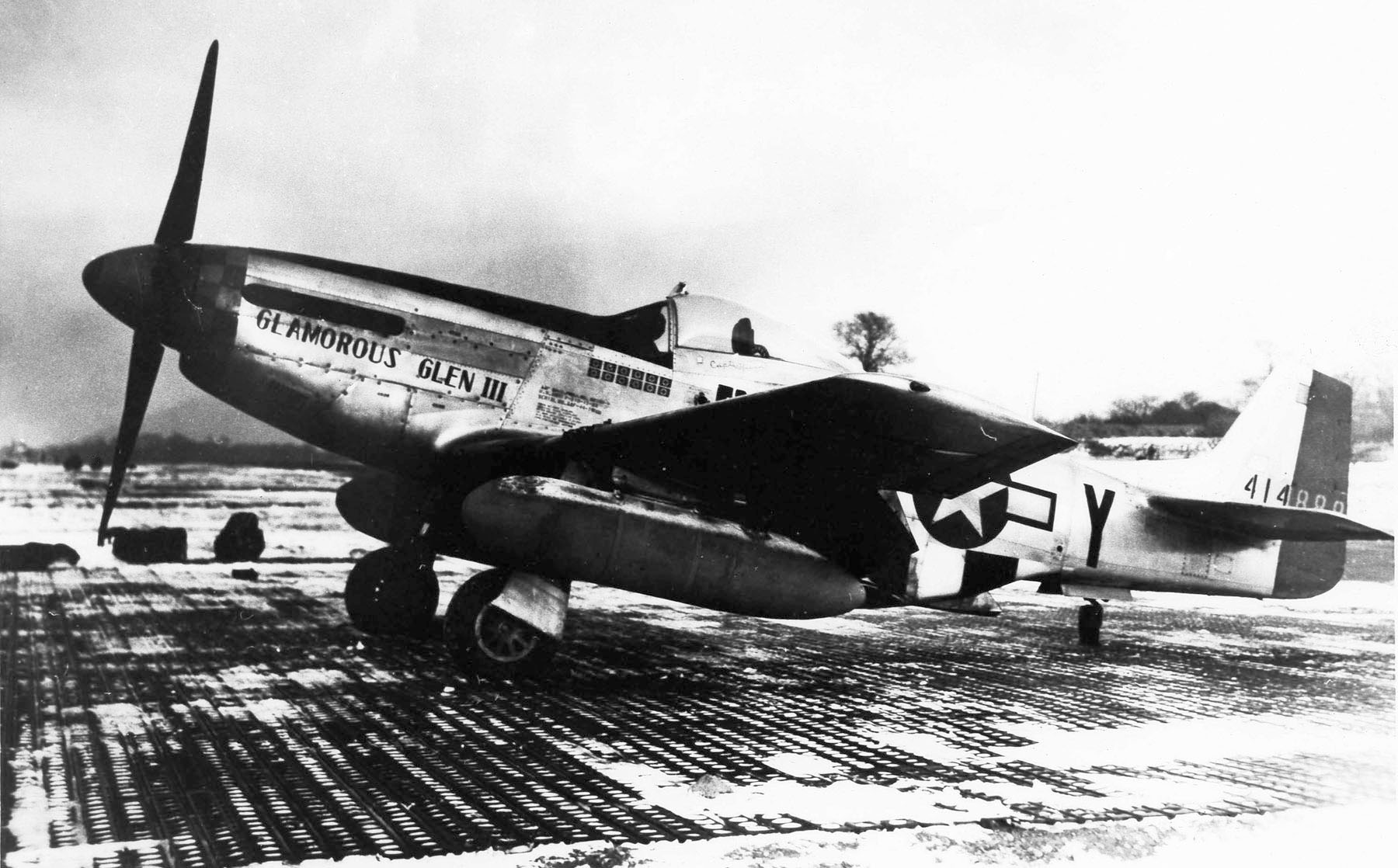BY
Trailblazing U.S. Air Force pilot Charles “Chuck” Elwood Yeager made history in 1947 as the first person to break the sound barrier in level flight. His triumph inspired a book and a movie, while the decorated flight pilot’s career soared for seven decades.
Yeager enlisted in the Army Air Corps in 1941 and gained a solid reputation as a fighter pilot during the Second World War.
The young pilot was then chosen to test the Bell X-1 supersonic research plane in 1947 after completing Flight Performance School; Yeager named the craft “Glamorous Glennis” after his wife of two years at the time.

Yeager sitting in the Bell X-1 cockpit, from a print signed by Yeager at Edwards Air Force Base (Jack Ridley)
In October 1947, Yeager flew to 43,000 feet and hit 700 miles per hour over the Mojave Desert, becoming the first human ever to break the sound barrier, also known as Mach 1.
Amazingly, Yeager had broken two ribs in a horse-riding accident just days before the record-breaking flight. Yet, he was philosophical about his injury. “If it became physically impossible to climb into the X-1, then I’d scrub the mission,” Yeager told Popular Mechanics in 1987, adding, “If I could get into the pilot’s seat, I knew I could fly.”
Yeager went on to describe the record-breaking moment itself.
“The airplane was allowed to continue to accelerate until an indication of .965 on the cockpit Machmeter was obtained,” he said. “At this indication, the meter momentarily stopped and then jumped up to 1.06, and the hesitation was assumed to be caused by the effect of shock waves on the static source.”
The record-setting pilot had flown at supersonic speeds for 18 seconds. “There was no buffet, no jolt, no shock,” he recalled. “Above all, no brick wall to smash into. I was alive.”

“Glamorous Glen III,” Yeager’s P-51D during the Second World War (U.S. Air Force)
After his historic achievement, Yeager ascended the ranks from captain to commander and trained military pilots to become astronauts. He retired from the Air Force in 1975.
Four years later, Yeager was featured in Tom Wolfe’s book “The Right Stuff” and its 1983 film adaptation, in which he played a cameo role as a bartender. He was awarded the Presidential Medal of Freedom in 1985.
Yeager’s feat became the subject of some controversy after the publication of Dan Hampton’s 2018 book “Chasing The Demon: A Secret History of the Quest for the Sound Barrier and the Band of American Aces Who Conquered It.”
Allegedly, war hero and test pilot George Welch broke the sound barrier just days before Yeager, but because he worked for aircraft manufacturer North American Aviation and not for the U.S. Air Force, his achievement was not recorded.
“[First secretary of the Air Force, Stuart] Symington put out a directive to North American Aviation saying that the sound barrier will be broken first by the US Air Force,” Hampton writes, as quoted by the New York Post. “The subtext was, I don’t care if you do it, but if you do and it gets publicized, you can say goodbye to these billion-dollar contracts.”
Nevertheless, Yeager’s achievement was unsullied by controversy. On the 50th anniversary of his breaking the sound barrier, he took to the skies and did it again, repeating the extraordinary feat over the Mojave Desert in 2012 at the age of 89.
That year, Yeager told CNN that he hit Mach 1.3 and “laid down a pretty good sonic boom over Edwards [Air Force Base].”
“I really appreciated the Air Force giving me a brand new F-15 to fly,” he said, adding that his team had to keep the plane below Mach 1.4.
“If you want to go Mach 2,” he added, “you start breaking glasses and cracking roof.”
We would love to hear your stories! You can share them with us at [email protected]
Republished with Permission The Epoch Times SUBSCRIBE
Get Citizensjournal.us Headlines free SUBSCRIPTION. Keep us publishing – DONATE




